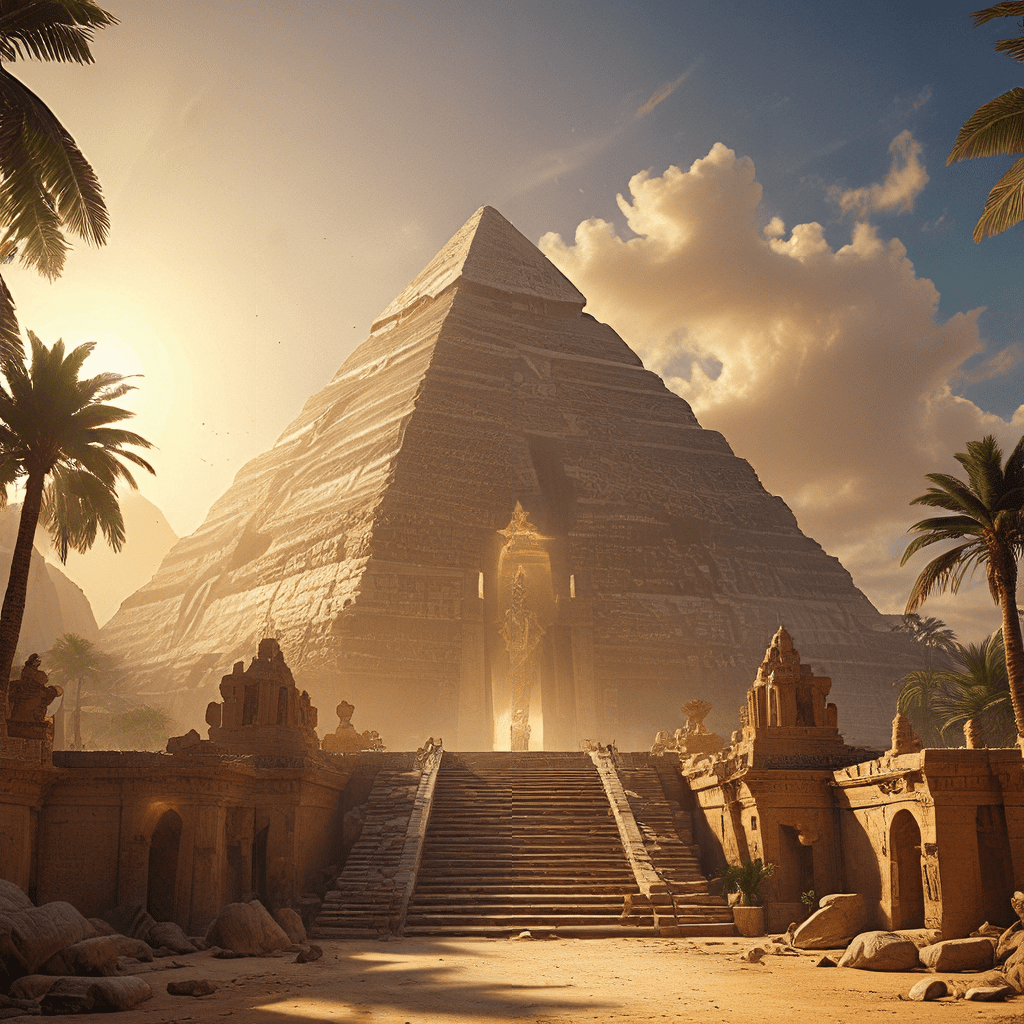The Old Kingdom of Egypt: An Introduction
The Old Kingdom of Egypt, spanning roughly 2686 to 2181 BC, marks a pivotal era in ancient Egyptian history. This period, often referred to as the “Golden Age,” witnessed a remarkable surge in political stability, economic prosperity, and cultural advancement. The Old Kingdom is renowned for its monumental architecture, particularly the iconic pyramids that stand as enduring testaments to the ingenuity and power of the pharaohs. This era also saw the development of complex religious beliefs, sophisticated social structures, and a thriving bureaucracy, laying the foundations for the Egyptian civilization that would endure for millennia.
The Rise of the Old Kingdom: Unification and Early Dynasties
The Old Kingdom emerged from the unification of Upper and Lower Egypt under King Menes (Narmer) around 3100 BC. This unification marked the beginning of the Early Dynastic Period, characterized by a series of powerful rulers who consolidated their control over the Nile Valley. These early pharaohs established the administrative and religious institutions that would define the Old Kingdom. They built temples, developed a system of writing, and created a complex social hierarchy, setting the stage for the remarkable achievements that would follow.
The Age of the Pyramid Builders: Pharaohs and their Monuments
The Old Kingdom reached its zenith during the Third Dynasty, with Pharaoh Djoser’s construction of the first monumental pyramid at Saqqara. This innovative structure, known as the Step Pyramid, marked a turning point in Egyptian architecture and served as an inspiration for the grand pyramids built by subsequent pharaohs. Pharaohs like Sneferu, Khufu, Khafre, and Menkaure of the Fourth Dynasty are renowned for their colossal pyramids at Giza, which stand as emblems of the Old Kingdom’s power and ambition. These magnificent tombs, constructed with meticulous precision and vast resources, were intended to ensure the pharaohs’ eternal afterlife and served as a testament to their divine status.
Architecture and Engineering Marvels: The Pyramids and Their Construction
The construction of the pyramids was a monumental feat of engineering and logistics. Thousands of skilled laborers, working under the direction of experienced architects and engineers, quarried vast amounts of stone, transported them to the pyramid site, and carefully fitted the blocks into place. The sheer scale of these projects required immense organizational skills, a deep understanding of geometry, and an advanced knowledge of astronomy, reflecting the sophistication of the Old Kingdom’s civilization. The pyramids are more than just tombs; they stand as remarkable examples of human ingenuity and the enduring power of Egyptian civilization.
Religious Beliefs and Practices: The Importance of the Afterlife
The pyramids were not just grand tombs; they were powerful symbols of the Egyptians’ belief in the afterlife. At the heart of their religious beliefs was a deep concern for the well-being of the deceased, leading to the development of complex rituals and elaborate funerary practices. The pharaoh was considered a divine king, representing Horus, the god of kingship, and believed to be a son of Ra, the sun god. After death, the pharaoh was expected to rule the underworld and maintain the cosmic order. The pyramids, adorned with intricate hieroglyphs and filled with elaborate treasures, were designed to help the pharaoh navigate the perilous journey to the afterlife.
Economic Prosperity and Social Structure: A Flourishing Society
The Old Kingdom witnessed a period of unprecedented economic prosperity. The fertile Nile Valley provided ample resources for agriculture, allowing the population to grow and thrive. A complex system of trade and transportation networks connected Egypt with other regions, bringing in valuable goods and raw materials. This economic prosperity fueled the construction of monumental architecture, the development of sophisticated crafts and technologies, and the expansion of the Egyptian empire. The society was structured into distinct classes, with the pharaoh at the top, followed by officials, priests, scribes, and commoners.
The Role of the Vizier and Government: Administration and Stability
The stability of the Old Kingdom was maintained through a well-organized and efficient bureaucracy. The vizier, the pharaoh’s chief minister, played a crucial role in administering the kingdom. The vizier oversaw the government, collected taxes, managed resources, and ensured the smooth functioning of the kingdom. A network of scribes, priests, and other officials worked under the vizier, maintaining order and enforcing the pharaoh’s laws. This sophisticated government system provided the framework for the Old Kingdom’s prosperity and longevity.
The End of the Old Kingdom: Power Struggles and Decline
Despite its impressive achievements, the Old Kingdom eventually began to decline. Power struggles among regional elites and a dwindling economy led to a weakening of central authority. The Fifth and Sixth Dynasties witnessed a decline in the construction of monumental architecture and a growing instability within the kingdom. As the pharaohs lost their grip on power, the Old Kingdom crumbled, ushering in a period known as the First Intermediate Period.
The Legacy of the Old Kingdom: A Foundation for Later Dynasties
Despite its demise, the Old Kingdom left an indelible mark on Egyptian history. The pyramids, temples, and other architectural marvels served as inspiration for later dynasties. The sophisticated administrative system, religious beliefs, and cultural traditions laid the foundation for the Middle Kingdom and the later flourishing of Egyptian civilization. The Old Kingdom stands as a beacon of human ingenuity, architectural prowess, and the enduring power of a civilization that shaped the course of history.
Exploring the Old Kingdom: Archaeological Discoveries and Modern Perspectives
Throughout the centuries, archaeologists have unearthed vast treasures of the Old Kingdom, shedding light on its rich history and culture. From the royal tombs at Giza to the intricate hieroglyphic inscriptions on the pyramid walls, these discoveries have provided valuable insights into the daily lives, religious beliefs, and artistic achievements of the ancient Egyptians. Modern scholars continue to study the Old Kingdom, using sophisticated technologies and interdisciplinary approaches to unravel its mysteries, understand its social structures, and appreciate the remarkable legacy of a civilization that continues to fascinate and inspire the world.




